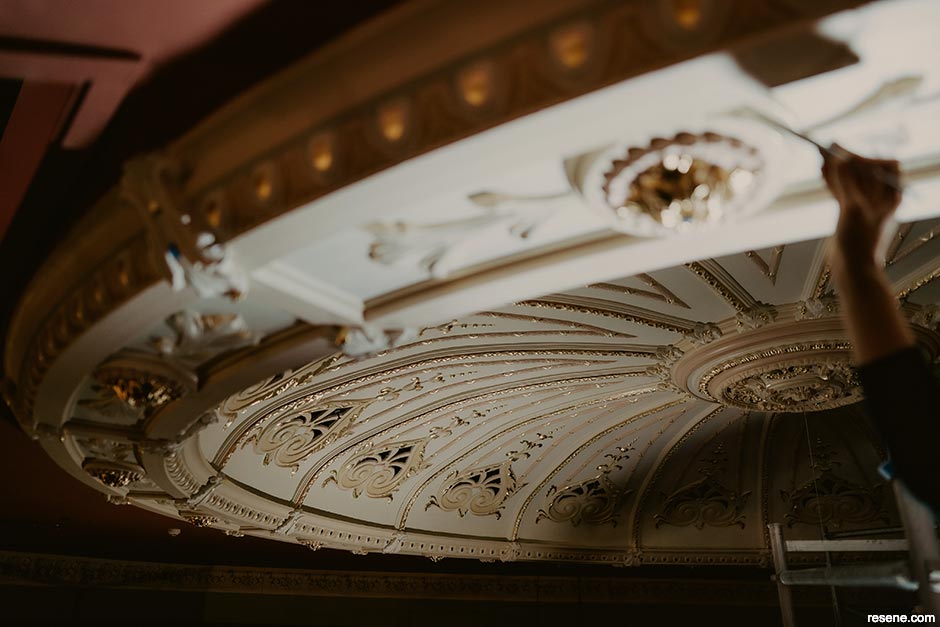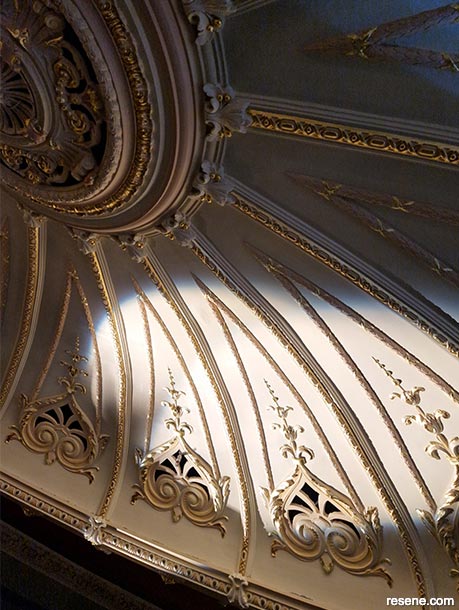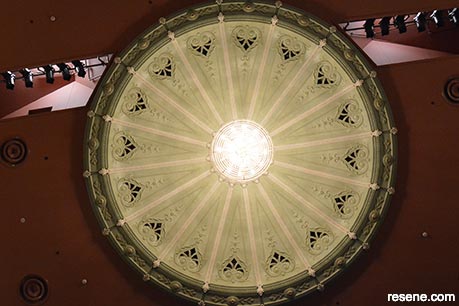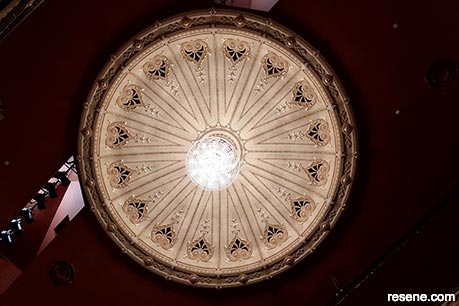From BlackWhite magazine - issue 07, in the can
Conservator Carolina Izzo preserves paint from the past for future generations to appreciate.

Carolina Izzo
There comes a point in every artist’s career where you start to put more thought into the materials you use to create your work. Often students or those just starting out might use lesser quality mediums because you’re more focused on mastering techniques, learning through experimentation and sticking to a budget than the longevity of your practice studies. But as your skills grow and you start getting more serious about your output – perhaps because you’re putting in a greater number of hours per piece, beginning to work at larger scales or start earning grants or commissions – it’s normal to start paying better attention to how you can make your works stand the test of time.
Artists today are lucky to have more access than generations before to not only a larger selection of media and materials than those in the past, but the paint we are able to use is far more stable and enduring than what painters had available when some of humanity’s most famous works were created. When you do a quick run to your local Resene ColorShop to grab more testpots, it’s easy to take for granted that the paint inside them is a highly-technical product that can withstand damage from our harsh UV light in ways the old masters couldn’t even dream was possible. In fact, one of the only reasons we are able to continue to view and enjoy precious artworks created centuries ago is because of the careful, dedicated work of people like Carolina Izzo.
Carolina has more than 40 years of experience under her belt as an internationally renowned art conservator. Born in Rome, she moved to Florence when she was 18 to begin her studies in a city that is home to some of the most celebrated fine art collections in the world. After completing her training in 1981, Carolina stayed in Florence to continue working and eventually began teaching preventive conservation of cultural materials herself and headed up a large team of professionals as Managing Director of her own studio.

Carolina has long been involved in consultation around collections belonging to the Italian State and various national and international institutions. But in 2001, she and her family decided to relocate to New Zealand. For six years, she worked as a painting conservator at the home of some of the country’s most valuable treasures, the Museum of New Zealand Te Papa Tongarewa. Working predominately on the Museum’s painting collection, she carried out preventive conservation and provided care for art collections on loan and within exhibitions.
“My husband is a Kiwi and we already had our three children at the time. I thought it would be easier to live here so we moved to Wellington. By that point, I thought I was done with conservation after already having worked 20 years in Italy. However, I got bored. The timing coincided with when Te Papa was looking for a painting conservator, so I applied for the job. I worked there from 2002 until 2008, then I resigned with the desire to become my own manager again, as I was for two decades in Italy. The main driver for this was the opportunity to meet the community and work on different sites. I was able to collaborate with artists such as Billy Apple, Robyn White, Stephen Burberry, Jim Allen and more.”
Carolina continues to work with a range of art professionals both nationally and internationally from her studios in Wellington and Auckland while also working as a teaching associate at Victoria University of Wellington. If that wasn’t impressive enough, she also directs large and small-scale conservation work on heritage buildings throughout New Zealand – which allows Carolina to dabble in an adjacent interest, architecture.

“My passion in art conservation started in high school from listening to the fascinating lessons held by the archaeology teacher, but I actually started studying architecture first before I moved to Florence,” says Carolina.
Most recently, both her passion for architecture and expertise with heritage buildings was put to use during the restoration of the Oamaru Opera House. She and her team at Studio Carolina Izzo were brought in to assist with restoring the original appearance of the theatre’s dome. They worked with Waitaki District Council and carried out research with assistance from Oamaru Opera House Director Frances McElhinney to investigate how the dome would have looked when the building first opened in 1907.
One of the first discoveries was that the palette that audiences had become accustomed to in recent decades was not in the dome’s original hues and did not fit with the style of the structure. “The interior had been repainted several times. The green and white Edwardian colours that were in the dome before the restoration began were applied sometime during the second half of the 20th century. The original colours, however, dated back to the very early 1900s. In full Victorian fashion, they were characterised by pink and white tones alongside gilded elements,” explains Carolina.
The dome’s style of decoration is known as Edwardian Baroque and similar elements have been used throughout Greece, Rome and northern Europe – quite often in theatres. Carolina says the Opera House’s beautiful details were of very high quality. ‘‘It’s very special, so we wanted to bring back the original intention of the architect.’’
To figure out which colours were first used, they started by testing samples of the paint. A key hint that the visible colours weren’t the original palette was that only gold leaf was discovered when – because of the structure’s vintage – they would have also expected to see silver. After further meticulous investigation, they uncovered the original hues and set about carefully matching the heritage colours to ones from the Resene range.
“The main tool we used for the project was the Late Victorian and Edwardian heritage colour scheme that Architect Ian Bowman created in collaboration with Resene. This colour range guided most of the reconstruction of the original hues with the aim of restoring the dome’s original appearance as closely as possible. The first part of the treatment consisted of a stratigraphic analysis of each distinct decorative element to deduce the original paint colours and composition. The challenge was to find the original colour scheme where the only visible reference was the repainted green palette.”

Before

After
Another challenge was the project’s tight schedule, as the work had to be completed in under five weeks in order to fit around scheduled performances. The ceiling was prepared in advance so that, once the team of experts from Carolina’s studio arrived, they could get stuck into the painting using Resene colours and applying new gold and silver leaf.
“Once the colour investigations had been performed, all the surfaces of the dome that were to be repainted were prepared mechanically with abrasive paper. Dust was removed before the undercoat of Resene Quick Dry primer was applied. During this phase, some missing and damaged decorative elements were reconstructed using araldite and plaster to restore the integrity of the surface before the decoration started,” says Carolina.
While the precise arrangement of colours was very slightly altered through client consultation to conform to the contemporary appearance of the building, Carolina says the colour scheme now present on the dome is true to the hues that would have appeared there originally. “The colours were carefully chosen from the Resene range to closely resemble the original Victorian era hues of the Oamaru Opera House dome, with pink tones Resene Sand, Resene Cashmere and Resene Bowman alternating with white tones Resene Spanish White and Resene Triple White Pointer to create a harmonious composition that has restored three-dimensionality to the stucco decorations. These hues were then repeated throughout all the decorative sections to maintain continuity and consistency.”
Many visitors were surprised by the tonality they saw once the original palette was reinstated, since most of the restored colours had far subtler values than those in the previous repainting. As this work is only one part of returning the Oamaru Opera House closer to its original appearance, chances are there could be more surprises still in store. But luckily, thanks to its careful restoration and fresh coats of high-performance Resene primer and topcoats, the dome’s rejuvenated appearance can be enjoyed for many years to come.
› To learn more about Carolina and her team’s extraordinary art and heritage conservation work, visit www.studioizzo.co.
Images: Sari Renee Photography
This is a magazine created for the industry, by the industry and with the industry – and a publication like this is only possible because of New Zealand and Australia's remarkably talented and loyal Resene specifiers and users.
If you have a project finished in Resene paints, wood stains or coatings, whether it is strikingly colourful, beautifully tonal, a haven of natural stained and clear finishes, wonderfully unique or anything in between, we'd love to see it and have the opportunity to showcase it. Submit your projects online or email editor@blackwhitemag.com. You're welcome to share as many projects as you would like, whenever it suits. We look forward to seeing what you've been busy creating.
Earn CPD reading this magazine – If you're a specifier, earn ADNZ or NZRAB CPD points by reading BlackWhite magazine. Once you've read an issue request your CPD points via the CPD portal for ADNZ (for NZ architectural designers) or NZRAB (for NZ architects).